New Delhi: Since the Doklam stand-off with India in 2017, China’s People’s Liberation Army has stepped up its activities in Tibet, with troop concentrations and frequent exercises being the order of the day. Now, the Gonggar airport in Tibet’s capital, Lhasa, is being expanded to increase civil as well as military capabilities.
All the airports in Tibet are dual-use — meaning they are utilised for civilian and military purposes. There are 60 such airports in China.
ThePrint had earlier reported a sharp increase in air activities as well as infrastructure development in the region. During the Doklam stand-off, an inclined airstrip had been added to the Shigatse airport, where fighters and unmanned aerial vehicles (UAVs) or drones were observed later. The People’s Liberation Army’s (PLA) logistics and supply chain in Tibet was also rehashed to make it difficult to intercept, by having a three-pronged automated replenishment system.
ThePrint takes an exclusive look China’s latest air-related activity in Tibet through satellite imagery.
UAV hangar
The Gonggar airport in Lhasa received a new UAV hangar at its south-eastern end soon after the Doklam stand-off.
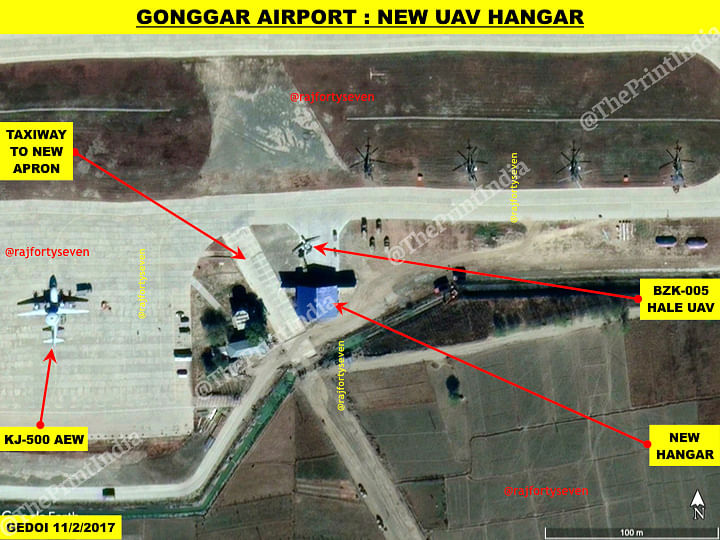
Satellite images from November 2017 show that a blue-topped hangar of 22mx17m was created to host BZK-005, the People’s Liberation Army Air Force’s (PLAAF) high-altitude long-endurance (HALE) UAV.
The BZK-005, with a wingspan of 18m, has a ceiling limit of 8km and a range of 2,400km.
Also read: Do business with China, but be careful — Tibetan President Lobsang Sangay advises India
Parking apron for fighters
The parking aprons east of Terminal 1 earlier catered to a squadron of fighter aircraft and about four to six transport and/or airborne early warning (AEW) aircraft.
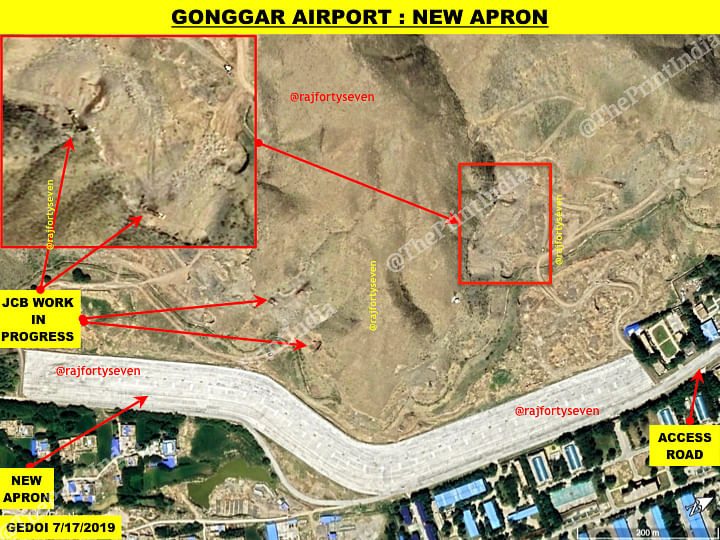
The aprons were extended after the Doklam stand-off to hold an additional squadron of helicopters and two AEWs.
Satellite images from November 2017 indicated increased presence of fighters, AEWs and UAVs at this airport.
The latest images suggest that a parking apron has been created very close to the mountain south of the airport, which is connected with a taxiway of 18m width, and caters for 36 fighter aircraft.
An operational deployment, possibly of surface-to-air missiles (SAM), was observed on this apron from August to November 2018.
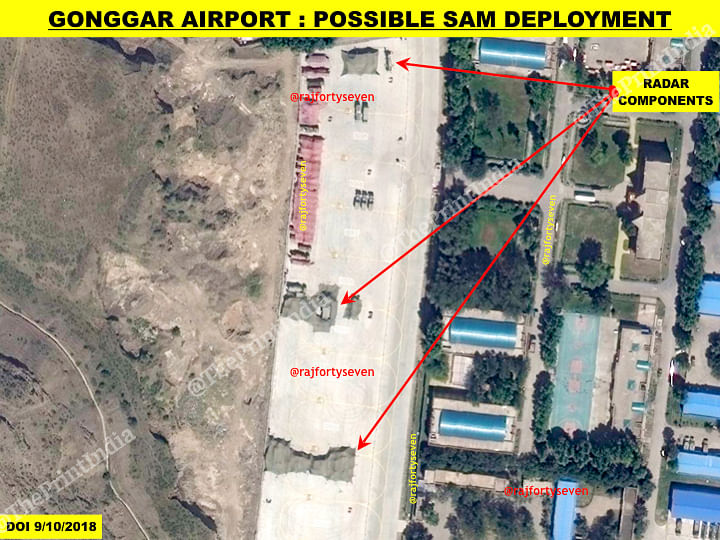
New civilian terminal
The new Terminal 3 at Gonggar airport, covering almost 21.75 acres, is designed to cater to 5.5 million passengers by 2020 and about 9 million passengers by 2025.
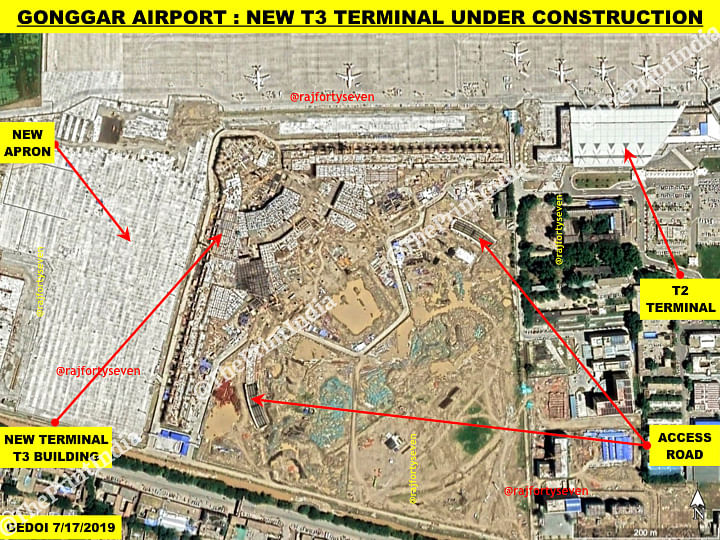
The arrowhead-shaped terminal building with a total length of 750m is assessed to be able to project out 20 aerobridges at a time, to provide all-weather dry access to aircraft and enhance the security of terminal operations.
Until now, the two existing terminals provided for only five aerobridges.
A large area in front of the new terminal is left open for parking and circular gardens to beautify the surroundings.
Also read: China is reinforcing underground military facilities near Tibet-Arunachal border


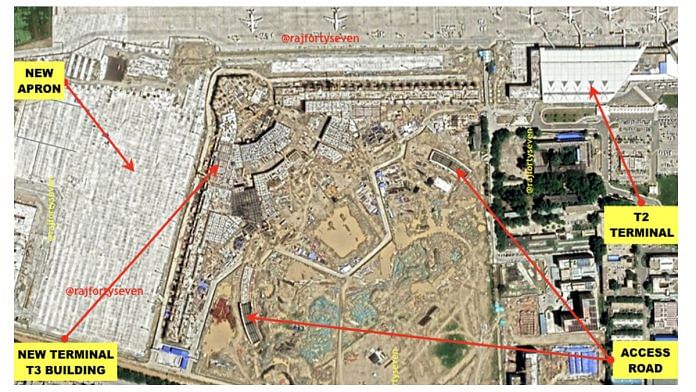

India should destroy these facilities in Tibet as Tibet is an illegal occupied regions which was a free state ,captain Abhinandan like aur warriors should be immediately dispatched to teach a lesson to PLA